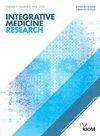针灸治疗癌症患者在日本姑息治疗团队:前瞻性病例系列研究
IF 3
4区 医学
Q2 INTEGRATIVE & COMPLEMENTARY MEDICINE
引用次数: 0
摘要
背景:综合肿瘤学会和美国临床肿瘤学会的联合指南推荐针灸治疗一些癌症患者的疼痛症状。本研究评估在常规姑息治疗中加入针灸是否至少在短期内缓解了日本住院癌症患者的主观症状。方法2015 - 2019年,在大阪某区域核心医院开展前瞻性病例系列研究。针灸被包括在癌症患者的常规护理中。主要结果是通过10cm视觉模拟量表(VAS)测量每位患者主观症状的立即变化。VAS评分降低20%作为最小临床重要差异(minimum clinical important difference, MCID)。结果共治疗83例肿瘤患者,平均年龄66.1岁。在至少一次治疗期间,疼痛、水肿、恶心、颈/肩/背部僵硬和呼吸困难的VAS评分显著降低。超过MCID改善的患者比例如下:67%为疼痛,75%为水肿,60%为感觉异常,80%为恶心,88%为僵硬,38%为不适,83%为呼吸困难,基于每次记录的最大改善。结论:日式针灸针刺相对细,刺激温和,有望作为癌症患者的姑息治疗,可能暂时缓解疼痛、水肿、恶心、僵硬和呼吸困难。根据我们的研究结果,建议进行一项实用的随机对照试验,并选择合适的对照组。本文章由计算机程序翻译,如有差异,请以英文原文为准。
Acupuncture for patients with Cancer in a Japanese palliative care team: A prospective case series study
Background
The joint guidelines of the Society for Integrative Oncology and the American Society of Clinical Oncology recommend acupuncture for pain symptoms in some patients with cancer. This study assessed whether adding acupuncture to usual palliative care alleviates the subjective symptoms of hospitalized patients with cancer in Japan, at least in the short term.
Methods
Between 2015 and 2019, we conducted a prospective case series study at a regional core hospital in Osaka. Acupuncture was included in the usual care of patients with cancer. The primary outcome was immediate changes in each patient’s subjective symptoms measured by a 10 cm visual analog scale (VAS). A 20 % reduction in VAS was set as the minimal clinically important difference (MCID).
Results
A total of 83 cancer patients (mean age: 66.1) were treated with acupuncture. A significant reduction was observed in the VAS scores for pain, edema, nausea, neck/shoulder/back stiffness, and breathlessness during at least one treatment session. The percentage of patients that improved beyond the MCID was as follows: 67 % for pain, 75 % for edema, 60 % for paresthesia, 80 % for nausea, 88 % for stiffness, 38 % for malaise, and 83 % for breathlessness, based on the maximum improvement recorded per session.
Conclusion
Japanese-style acupuncture, with relatively finer needles and gentler stimulation, has shown promise as a palliative treatment for patients with cancer, potentially offering temporary relief from pain, edema, nausea, stiffness, and breathlessness. Based on our findings, a pragmatic randomized controlled trial with an appropriate control group is recommended.
求助全文
通过发布文献求助,成功后即可免费获取论文全文。
去求助
来源期刊

Integrative Medicine Research
Medicine-Complementary and Alternative Medicine
CiteScore
6.50
自引率
2.90%
发文量
65
审稿时长
12 weeks
期刊介绍:
Integrative Medicine Research (IMR) is a quarterly, peer-reviewed journal focused on scientific research for integrative medicine including traditional medicine (emphasis on acupuncture and herbal medicine), complementary and alternative medicine, and systems medicine. The journal includes papers on basic research, clinical research, methodology, theory, computational analysis and modelling, topical reviews, medical history, education and policy based on physiology, pathology, diagnosis and the systems approach in the field of integrative medicine.
 求助内容:
求助内容: 应助结果提醒方式:
应助结果提醒方式:


